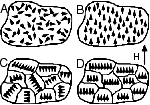Quick Reference Activity Guide: Ferrofluids
See also Ferrofluid: NanoMedicine
Activity Materials
- Ferrofluid demonstration cells
- Ferrofluid fish tank
- Cow magnets
Starting Points
Do you think that this is a solid or a liquid? [Ask this while pouring the ferrofluid; i.e., without a magnet near the ferrofluid.] Can liquids be magnetic? Have you ever seen a liquid that is magnetic? How could you keep a liquid in place in space (where there is no gravity)? Can you make a penny float?
Demonstration Procedures
Use starting points to introduce the idea that this is a unique material that has both magnetic and liquid properties. In fact, there is no such thing as a liquid magnet (because magnetism is a cooperative property of electrons in a solid) but ferrofluid is the closest material to that. It is a suspension of nano-sized particles of magnetite, a magnetic compound found as black sand on some beaches, suspended in a liquid.
Participants should carefully look at the ferrofluid that is in the demonstration cell. Let them investigate the vial and its contents with and without a magnet. Most observers would say that the material in the vial is a liquid but in fact it is a mixture of very small solid particles within a liquid. Ask them if they can describe the differences between solids and liquids. Most people are familiar with the states of matter of water if you need to give them an example. Observers should think about what the atoms are doing in each material and how closely they are spaced from one another. In a liquid the atoms or molecules are free to move around as opposed to a solid in which they are more tightly bound in one spot.
Participants should note the effects of the magnet on the ferrofluid. By bringing the magnet close to the ferrofluid they should see spikes appear that follow the lines of the magnetic field that is emitted by the magnet. This experiment is similar to a magnet and iron filings, except that the small particles make everything look smoother.
Participants can use the cow magnets to drag the ferrofluid up the sides of the ferrofluid tank. They should notice that when the magnet is removed the ferrofluid will flow down the sides of the tank like a liquid. The magnet should not be placed over the tank.
Participants can float a penny on top of the ferrofluid spikes by using a strong magnet. This is another example in the change in density that occurs when a magnet is brought close to this material. Note: It's not a good idea to pick up the penny since it will stain your hands.
Fact Sheet
Ferrofluids have the fluid properties of a liquid and the magnetic properties of a solid. The commercial ferrofluids contain tiny particles (~10 nm diameter) of a magnetic solid suspended in a liquid medium.
Ferrofluids were originally discovered in the 1960s at the NASA Research Center, where scientists were investigating different possible methods of controlling liquids in space. The benefits of a magnetic fluid were immediately obvious: The location of the fluid could be precisely controlled through the application of a magnetic field, and, by varying the strength of the field, the fluids could be forced to flow.
Ferrofluids containing magnetite can be prepared by combining the appropriate amounts of an Fe(II) salt and an Fe(III) salt in basic solution, a combination that results in magnetite solid, Fe3O4, precipitating from solution. This lab is can be done in high school and college chemistry courses. See http://www.mrsec.wisc.edu/edetc/nanolab/ffexp/index.html.
Ferrofluids can either be water-based (particles suspended in water) or organic-based (particles suspended in oil, fluorocarbons, etc.) depending on their intended use. The ferrofluid used in the demonstrations is an organic-based ferrofluid. The ferrofluids made in chemistry courses is water-based for easier clean up.
Applications
Low Friction Seals - Ferrofluids have been used to create low friction seals for rotating shaft motors. A ferrofluid can behave as a liquid O-ring for a rotating shaft. The ferrofluid is held in place by permanent magnets and forms a tight seal, eliminating most of the friction produced in a traditional mechanical seal. These rotating shaft seals are found in rotating anode X-ray generators and in vacuum chambers used in the semiconductor industry.
Computer disk drive seals - Ferrofluid seals are also used in high-speed computer disk drives to eliminate harmful dust particles or other impurities that can cause the data-reading heads to crash into the disks.
Loudspeakers - Ferrofluids are being used to improve the performance of loudspeakers. In a loudspeaker, electric energy is sent through a coil located in the center of a circular permanent magnet. The magnetic field induced by the electric energy causes the coil to vibrate and thus produces sound and heat. Bathing the electric coil in a ferrofluid, which is held in place by circular permanent magnets, dampens unwanted resonance and also provides a mechanism to dissipate excess energy (in the form of heat) supplied to the coil. Both of these factors lead to an overall improved sound quality.
Biomedical applications - There is much hope for future biomedical applications of ferrofluids. For example, researchers are attempting to design ferrofluids that can carry medications to specific locations in the body through the use of applied magnetic fields. Other ongoing work is investigating the use of ferrofluids as to help with magnetic resonance imaging (MRI).
Background and Supporting Information
Many students are aware that certain materials can be magnetic or can respond to a magnet but most do not understand the underlying concepts of magnetism. Our goal is to introduce the idea that magnetism occurs due to things happening at the atomic and electronic level. Ferrofluids display the novel combination of properties of both a magnet and liquid when, in fact, there is no such thing as a liquid magnet.
How to Talk To the Public About Magnetism
Magnetism was originally discovered in ancient Greece and China. Magnetism is derived from the term Magnesia, the name of a region in Asia Minor where lodestone, a naturally occurring magnetic mineral, was found. Due to lodestone's ability to respond to the magnetic poles of the Earth, it was found useful in early navigational systems on ships.
Every magnet has a North Pole and a South Pole. Like poles repel and unlike poles attract. Whenever a magnet is broken, a north pole will appear at one of the broken faces and a south pole at the other, such that each piece has its own north and south poles.
The basis for magnetism has been verified down to the atomic level. Electrons have both an electrical charge and a spin, it can be called a charge in motion. Any moving charge gives rise to a magnetic field. The spin of an electron can be oriented in one of two directions, either up or down. When electrons pair up in an energy level they will have opposite spins and their magnetic fields will cancel.
In some atoms there can be more electrons with spins in one direction than the other because they are not all paired up (Pauli Exclusion Principle). The result is that there is a net magnetic field for the atom. This is a paramagnetic material. When placed in a magnetic field the atoms in a paramagnetic material will tend to align their fields with the external one, i.e., the North Pole of each atom will align with the North Pole of the applied magnetic field. Paramagnetic substances are only weakly attracted by a magnet.
 |
A diagram showing the orientation of electrons in (A) a paramagnetic solid in the absence of a magnetic field, H; (B) a paramagnetic solid in the presence of a magnetic field; (C) a ferromagnetic solid in the absence of a magnetic field; and (D) a ferromagnetic solid in the presence of a magnetic field. |
By comparison, some substances contain regions in which the atoms tend to line up in the same direction so that they reinforce one another. Such a region is called a domain. When a material contains domains such as this it is called a ferromagnetic material. When placed in a magnetic field the domains will tend to align their fields with the external one. A common misconception is that magnetic forces only exist where the "lines of force" are drawn in a diagram. It is important to point out that these lines only show the direction of the field.
By the end of the 2nd grade, students should know that:
- Magnets can be used to make some things move without being touched.
By the end of the 5th grade, students should know that:
-
Without touching them, a magnet pulls on all things made of iron and either pushes or pulls on other magnets.
By the end of the 8th grade, students should know that:
-
Electric currents and magnets can exert a force on each other.
By the end of the 12th grade, students should know that:
- Magnetic forces are very closely related to electric forces and can be thought of as different aspects of a single electromagnetic force. Moving electric charges produce magnetic forces and moving magnets produce electric forces. The interplay of electric and magnetic forces is the basis for electric motors, generators, and many other modern technologies, including the production of electromagnetic waves.
Additional Information
Sources of Ferrofluid
References
Synthesis of Aqueous Ferrofluid: MRSEC Education and Outreach
FerroFluid: MRSEC Education and Outreach
P. Enzel, N. Adelman, K. J. Beckman, D. J. Campbell, A.B. Ellis, G. C. Lisensky, "Preparation of an Aqueous-Based Ferrofluid." J. Chem. Educ. Vol. 76, 943 (1999).
A.S. Lubbe, C. Alexiou, C. Bergemann, "Clinical Applications of Magnetic Drug Targeting." J. Surg. Res. Vol. 95 (2), 200 (2001).
Authors: Cindy Widstrand, Amy Payne, Wendy Crone, George Lisensky, Janet Kennedy, Mike Condren, Ken Lux, Karen Nordell, Nick Stanton, and Arthur Ellis



